#new joseon
Explore tagged Tumblr posts
Text
Ep11 the story of park marriage contract story short review

I know I'm gonna cry watching this ep and I did ..my tears was pouring hard when it's sawol and Yeo woo last meeting

It was too hard for me like sawol can stay but she cant

When sawol ask can't u stay..no she can't..if she stay tae ha die

And this bed scene I just can't




I would want this kinda scene for my demon too ..the naked hug..but I don't want the separation.
Why??? Why separate them after their first night??why
When she meet tae ha from joseon ..at least she got to see his face but it's not the same tae ha

Also my theories of my demon n the story of park marriage contract story writernim sit on the same table also share same stylist .
Tae min wearing gu won clothes today on the same ep..wow..

I'm so surprised but validate that this 2 drama working closely and sharing each other detail😂😂😂
Regarding finale..it seem like tae ha waiting for Yeon woo but how could she go back to new joseon..maybe involved falling again as the preview show Yeon woo about to fall again..I hope she can go back..this is not right..she belong in new joseon
#2024#the story of park's marriage contract#viu#mbc#mbc drama#bae in hyuk#lee se young#park yeon woo#kang tae ha#new joseon#joseon#go back#bed scene#crying#stay#sa wol#ep11#short review#naked hug#hug#my demon#same#stylist#writernim#clothes
4 notes
·
View notes
Text
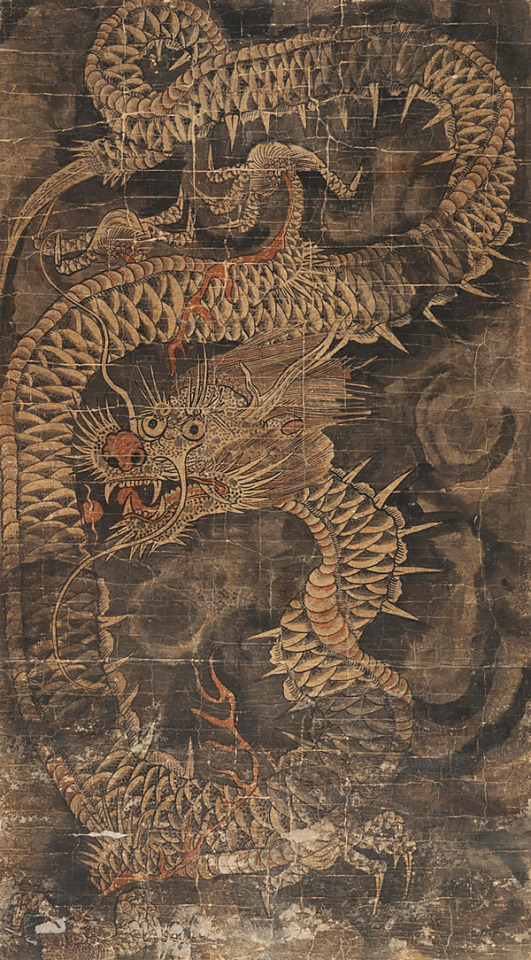
Happy Year of the Dragon
l 운룡도 Dragon in Clouds l Joseon l 19th Century l National Folk Museum of Korea
#year of the dragon#happy new year#2024#paintings#art#national folk museum#korea#new year's day#korean#19th century#joseon dynasty#south korea#seoul#lunar new year#dragon#blue dragon
744 notes
·
View notes
Text




Woo Do Hwan (우도환)
#우도환#Woo Do Hwan#禹棹煥#Woo Dohwan#사냥개들#Bloodhounds#조선변호사#Joseon Attorney#더 킹 : 영원의 군주#The King: Eternal Monarch#나의 나라#My Country: The New Age#매드독#Mad Dog#actor#muscular#shirtless#hunk#*#K drama#Kdrama#dreamboat#beefcake#cute guy#hot guy
188 notes
·
View notes
Text
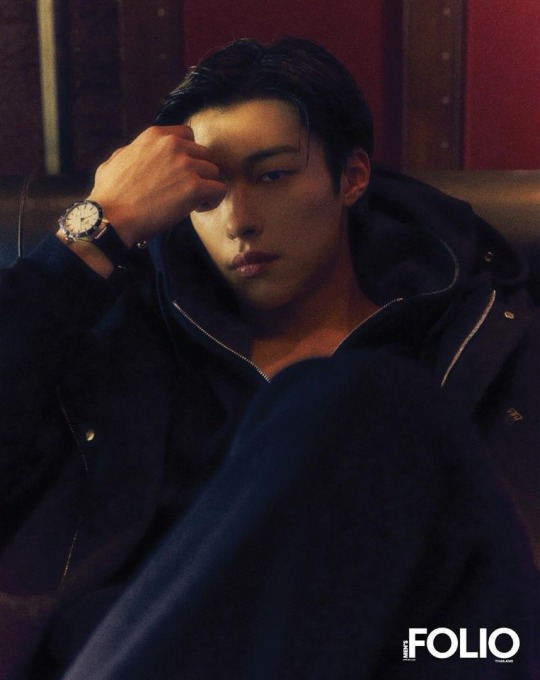
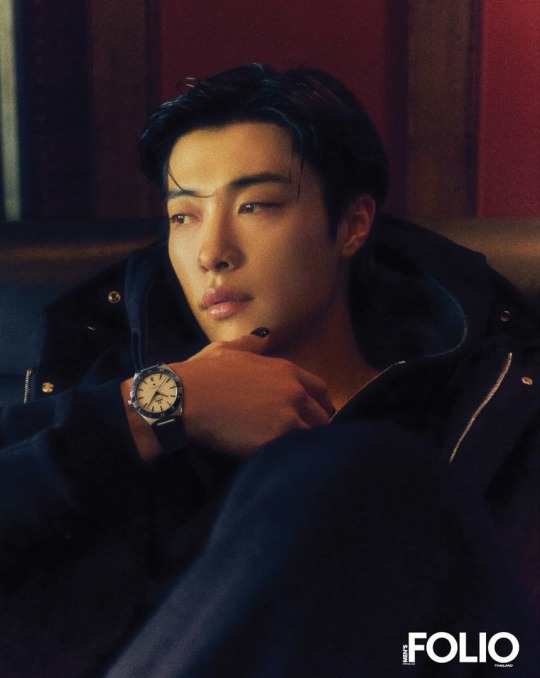
Woo Do Hwan ~ Men’s Folio Thailand
#woo dohwan#woo do hwan#korean actor#kdrama#bloodhounds#mr. plankton#joseon attorney#the king eternal monarch#the king: eternal monarch#my country: the new age#my country the new age#coolgenie
327 notes
·
View notes
Text



WOO DO HWAN with BLITZWAY
July 2024 I GQ
#woo dohwan#woo do hwan#LOOK AT MY MAN#my country the new age#mad dogs#kactor#bloodhounds#tempted#joseon attorney#the king eternal monarch#beautiful people#photoshoot#GQ
109 notes
·
View notes
Text



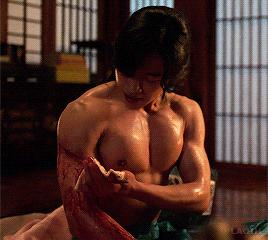
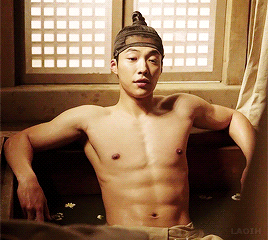
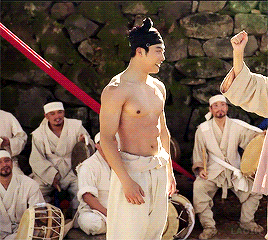

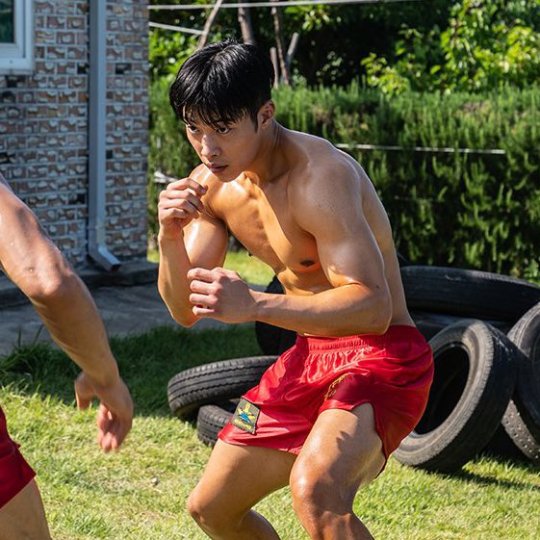

This genre of Woo Do Hwan 👀
#Woo Do Hwan#Woo Dohwan#kdrama#kdramaedit#Mad Dog#My Country The New Age#Joseon Attorney#Bloodhounds#my gifs#don't mind me#I failed to give them all the same tone and lighting bc it's already 90 minutes past midnight and I need to sleep ._.#I'll update it once Bloodhounds is out and I can make proper gifs
690 notes
·
View notes
Text
Nam Seon ho and his stupidly beautiful face.




#Face like this isn't mean for war#this is a face people go to war for#I'm in my “nam seon ho the prettiest boy in joseon” agenda#So unrealistic of show writer to let him be a mediocre inspector when realistically he would pull any daughter from highest nobility#With his face card alone#And gain a much more political power and be a huge political player.#They need to make him gay to prevent that from happening.#And also a loser at that#mctna#my country: the new age#my country the new age#nam seon ho#woo do hwan#woo dohwan#nam seonho
65 notes
·
View notes
Text
In Defense of Lady Kang/Queen Sindeok (1/3)

As promised, here's the first part of my defense of Queen Sindeok, explaining her historical political situation + clearing up some common fandom misconceptions about her, which I don't blame anyone for since they originate from the show itself. I must admit that I have a bit of a soft spot for her since history generally tends to be unkind to women - this extends to modern media and MCTNA is no exception:
(more under the cut)
Before we start, I thought I'd give a small refresher on the Yi family constellation - crucial for setting up the conflict and crown prince issue - with the aid of this extremely useful graphic by bodashiri (excluding the daughters for simplicity's sake):

(From here: x)
As you can see, Yi Seong-gye (King Taejo of Joseon) had two wives:
His first wife Lady Han (Queen Sinui) gave birth to six sons: 1. Yi Bang-woo (Prince Jinan), 2. Yi Bang-gwa (Prince Youngan), 3. Yi Bang-ui (Prince Yikan), 4. Yi Bang-gan (Prince Hoean), 5. Yi Bang-won (Prince Jeongan) and 6. Yi Bang-yeon (Prince Deokan).
His second wife Lady Kang (Queen Sindeok) gave birth to two sons: 7. Yi Bang-beon (Prince Muan) and 8. Yi Bang-seok (Prince Uian),
meaning that Seong-gye had eight sons overall.
With that out of the way, let's get started!!!
1. Queen Sindeok was NOT a concubine

(From here: x)
She is referred to as Yi Seong-gye/King Taejo's capital/Seoul wife in the show too:

However, every time Bang-won calls her a concubine and her children illegitimate there is never any pushback or correction by anyone, not even when he calls her younger son Bang-seok/Prince Uian a ‘seoja’ (illegitimate child born to a commoner concubine or royal concubine) in front of Seon-ho:


You'd think Seon-ho would defend Bang-seok by correcting Bang-won... but nope. Nada.
Not even Queen Sindeok (!!!) is allowed to defend herself and her children when they get accused of the same:





Like, what is this madness!!!
Anyone who doesn't know about Korean history would never even SUSPECT that this isn’t actually true, and that Queen Sindeok is in fact a legitimate second wife and queen. By giving no pushback to the (false) claims of illegitimacy, the show seems to implicitly support Bang-won’s narrative of her being a lying, conniving, greedy bitch who wants to push her child on the throne despite having no right to it whatsoever as a concubine and bastard respectively.
Queen Sindeok's tragedy, the one that MCTNA fails to portray, is not that she was a concubine who tried to rise above her station (because she was not); it's that, due to the transition from Goryeo to Joseon, she found herself caught between two conflicting sets of laws:

(From Tombstones without a Tomb by Hildi Kang)
A queen while alive, and unjustly demoted to a concubine in death by Bang-won/King Taejong who used these legal changes and the new Confucian ruling to his advantage, her status was a matter of contention for scholars and kings alike for almost 300 years, until finally, in 1669, the scholar Song Si-yeol managed to amass enough people and put enough pressure on King Hyeonjong to make him give in to their demands and restore Queen Sindeok to her rightful status and honor as queen.
+ Bonus:

(From Tombstones without a Tomb by Hildi Kang)
Turns out that according to the new Confucian ruling, Bang-won himself should have been considered illegitimate too!! Surprise!!!
#my country the new age#my country: the new age#mctna#mctna meta#mctna critical#queen sindeok meta#queen sindeok and yi bang won#queen sindeok#yi bang won#history#seamayweed meta#seamayweed stuff#yes i wrote a whole essay about a minor character probably no one cares about lol#(though she IS an important historical figure - the FIRST queen of joseon!!!)#you may have noticed that i constantly refer to her as queen#bc that's what she IS despite bang-won's attempts at historical revisionism!!!#this is not to say that you have to like her or that you are a bad person for not liking her and for liking bang-won instead#bc that's not what this is about#it's merely what it says on the tin: a defense#also... just found out her death anniversary was only a few days ago on september 15!!!#you know what. maybe her spirit possessed me and made me write this 3 part essay about her
23 notes
·
View notes
Text

Why These Imperfect Korean ‘Moon Jars’ Sell for Millions
Old, round, imperfect and beautiful — that’s how fans of Korean art describe the moon jar, or “dalhangari.”
These unassuming, plain white pots have entranced everyone from rapper RM, of K-pop sensation BTS, to philosopher Alain de Botton.
The former director of London’s Victoria and Albert Museum, Beth McKillop, has called the moon jar an “icon of Korean identity.” And if price is any indicator of popularity, one recently sold for over $4.5 million at a Christie’s auction.
This month, a rare example from the late 17th or early 18th century will go on sale at Sotheby’s in New York, where it’s expected to fetch more than $3 million.
“A large moon jar has always been expensive, but I think the big uptick in prices and value is… because their appeal is now global,” said Angela McAteer, Sotheby’s international head of Chinese art for the Americas and Europe, over video call. “You’ve got an international cohort of bidders competing for them, so it’s gone beyond the traditional connoisseur collecting community of Korean art.”
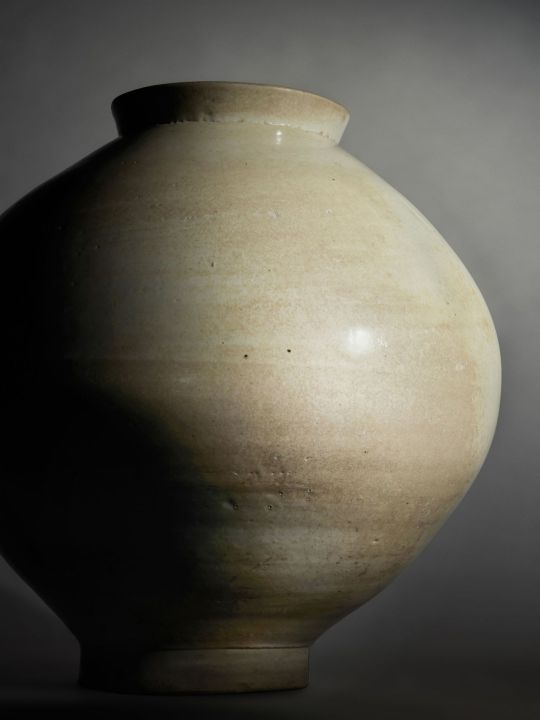
Huge price tags also result from the jars’ rarity. Although made for over a century in the royal kilns of Korea’s last kingdom, the Joseon dynasty, few are thought to exist today. Estimates for the number of larger ones (those more than 40 centimeters, or 15.7 inches, tall and wide) that have survived over the years range from 12 to 30.
Having passed through auction houses and antique dealers across the world, several of these are now in the collections of institutions like the British Museum and Boston’s Museum of Fine Arts, as well as in the hands of private collectors.
‘Owning a piece of happiness’
The first moon jars were created in the royal kilns in Gwangju (a city just outside Seoul, not the larger southern city of the same name) from 1650 to 1750. They were made from pure white porcelain and kaolin clay, and, following the neo-Confucian fashions of their day, the pots reflected values such as propriety, humility, frugality and purity. They were likely used at court and in upper-class homes as containers for food and liquids, or as decorative vessels.
In the mid-20th century, moon jars began gaining international appreciation thanks to influential admirers such as Japanese folk crafts scholar Yanagi Soetsu and British potter Bernard Leach, who bought one from a Seoul antique store in 1935. Leach once said that having a moon jar was like “owning a piece of happiness,” and would later give his to fellow potter Lucie Rie for safekeeping during World War II. It stayed in her studio until her death and was later acquired by the British Museum.
Charlotte Horlyck, lecturer in Korean Art History at the University of London’s School of Oriental and African Studies, wrote in the Art Bulletin journal that after World War II the moon jar “caught the attention of an early generation of postcolonial Korean artists and scholars who sought to restore Korean art history and national identity,” as the pieces “resonated with the visual language of international modernism and minimalism of the mid-20th century while remaining a distinctly Korean work of art.”
The moon jar’s allure
When Sotheby’s announced its forthcoming sale, the auction house described its 44-centimeter (17.3-inch) moon jar as an object that inspired, astounded and soothed those who “stand in its presence.” It’s a funny thing to say about a pot, to speak as if it’s alive, but the jars’ visceral, emotional impact on people is something that comes up time and time again in the literature.

Choi Sunu, a former director of the National Museum of Korea, has described the museum’s moon jars as being like companions, or muses that have inspired his writing and stirred his creativity. Bernard Leach admired the pots for their “natural unselfconsciousness.” In 2012, South Korea’s then-Unification Minister Yu Woo-ik used the pot as a metaphor symbolizing a reunified Korean peninsula (moon jars are created in two hemispherical pieces and joined in the middle).
More recently the rapper RM, of K-pop group BTS, posted a picture of himself hugging a modern-day moon jar on Twitter, telling fans that the pots made him feel calm.
“It’s hard for someone to really comprehend how a pot can make you feel that way,” said McAteer. “It has this real meditative presence. If you’ve sat in front of a great (painting by US artist, Mark) Rothko and you feel this kind of palpable energy emanate from it, and you could sit for hours and just feel something in its presence — the moon jar has that too.”
“The more you look at it, the more there is to see. It looks different from every angle,” she added. “We had real issues with the photography and the catalog because it looks like a different piece every time you rotate it, or you change the lighting. The surface is just alive, you know.”
“You can see how the glaze coalesces; you see these spontaneous bursts of this blush color that’s happening in the firing. You can lose yourself in its surface.”
Modern masters
Modern Korean potters have been inspired by the jars, and a number have come up with their own homages. Ceramist Kim Syyong covers his pots with a black glaze, while Yun Ju Cheol’s versions look spikier like a pufferfish and Choi Bo Ram’s unvarnished, textured blue vases have a denim-like quality.
Others, like Kwon Dae Sup, have looked to closely recreate the process used by the potters of yore. The 71-year-old ceramist produces unadorned white jars and allows for all the beautiful imperfections produced to shine through. He works out of a studio in Gwangju, where the royal kilns that produced moon jars were once located.

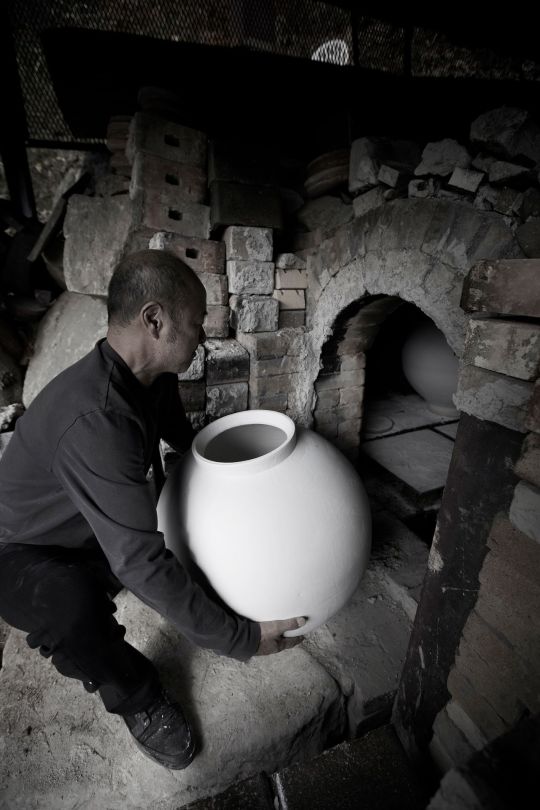

There’s a great deal of preparation that goes into making a moon jar traditionally. It’s labor-intensive: washing, sifting impurities from the clay, kneading and rolling it to remove air bubbles, carrying around these large hunks, not to mention hand throwing the clay itself to that oversized bowl shape without collapsing, and the work keeping a pine wood fire burning for 24 hours while the pot hardens in the kiln. Kwon also built his own kiln to replicate the old process as closely as possible.
“I do this because it’s fun,” he said in a phone interview. “Every time I make something, it’s novel … The quality of the material is different every time. The conditions in which I make the pots is new every time.”
Kwon said he also feels an emotional connection to the moon jar. As a student he was so moved by a one he saw in a Korean antique store that he decided they would be his life’s work. “They feel alive,” he said.
In a 2019 book on his work by Axel Vervoodt Gallery the potter is quoted saying he tries to produce art that needs no addition or subtraction. “I wish to create work that has an imposing presence but harmonizes with its surroundings regardless of where and when it is displayed. It should give peace of mind and a sense of comfort to all who look at it.”
By Christy Choi.
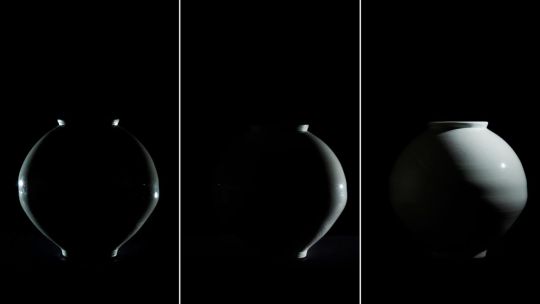
#Moon Jars#Why These Imperfect Korean ‘Moon Jars’ Sell for Millions#Dalhangari#Joseon dynasty#pottery#porcelain#Bernard Leach#Lucie Rie#Kwon Dae Sup#ancient artifacts#archeology#archeolgst#history#history news#ancient history#ancient culture#ancient civilizations#korean history#korean art#art#artist#art work#art world#art news#long reads
133 notes
·
View notes
Text

.
#tale of the nine tailed#TOTNT#Lee Rang#Joseon!Rang#20!Rang#Ahhhh our baby fox is so cuteeeeeee#drawing practice#And trying new style heehee#fanart#tale of the nine tailed fanart#Doodle
8 notes
·
View notes
Text
HBD 32 years WDH

happy birthday to lovely kind talented elegant Woo Do-hwan😇🥳
hope he keep I hope he'll keep successful and happy in his acting and personal life.
#woo do hwan#save me#mad dog#the great seducer#my country the new age#my country: the new age#mctna#the king eternal monarch#joseon attorney: a morality#joseon attorney#bloodhounds#divine fury#kdrama#kmovie#his beautiful smile#hope see him in great works#masterpiece drama or movie#and hope Mr plankton release soon
19 notes
·
View notes
Text
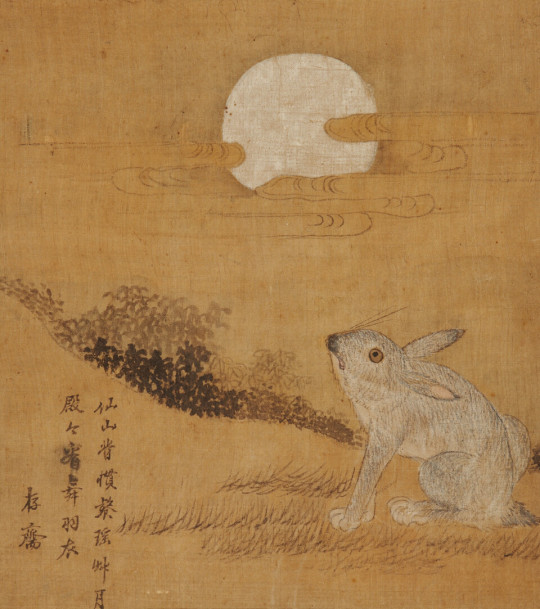
Happy Year of the Rabbit
l 19th Century, Joseon l National Museum of Korea
#year of the rabbit#rabbits#happy new year#seollal#설날#south korea#19th century#1800s#2023#art#painting#lunar new year#korean#korea#joseon dynasty
298 notes
·
View notes
Text









Woo Do Hwan (우도환)
#우도환#Woo Do Hwan#禹棹煥#Woo Dohwan#Mr. 플랑크톤#Mr. Plankton#사냥개들#Bloodhounds#조선변호사#Joseon Attorney#더 킹 : 영원의 군주#The King: Eternal Monarch#나의 나라#My Country: The New Age#매드독#Mad Dog#actor#*#muscular#shirtless#hunk#K drama#Kdrama#dreamboat#beefcake#cute guy#hot guy
105 notes
·
View notes
Text
god im the prettiest in my workplace (conceited ena hours)
#no i just dressed up today#new shirt new heels new pants new makeup#btw i spent an insane amount of money on dior and ysl makeup products#and also too faced#and its coming#TODAY#and also beauty of joseon products (sunscreen + face cream)#+ corcx#or whatever that snail mucin company has#i have their amazing salycilic acid facewash and the mucin does wonders for my easily angy skin#en rambles#tho shes broke now :3 but who gives a fuck
4 notes
·
View notes
Text



WOO DO HWAN with BLITZWAY
July 2024 I GQ
#i love how silly these pics are#they give off the same energy#woo dohwan#woo do hwan#LOOK AT MY MAN#my country the new age#mad dogs#kactor#bloodhounds#tempted#joseon attorney#the king eternal monarch#beautiful people#photoshoot#GQ
57 notes
·
View notes
Text
IT'S HIS BIRTHDAY 🎂🎂



Everyone say happy birthday to my prettiest babyyyyyyy 💞💞💞💞💞💞
#woo do hwan#woo dohwan#my country: the new age#joseon attorney: a morality#the king eternal monarch#my country the new age#Joseon attorney#the king: eternal monarch#nam seon ho#Kang han Soo#jo yeong
29 notes
·
View notes